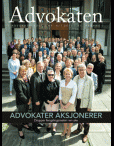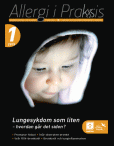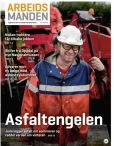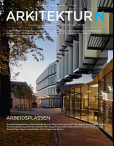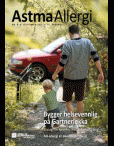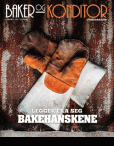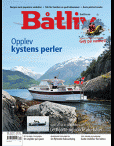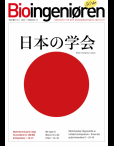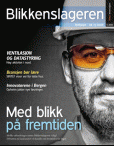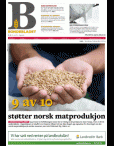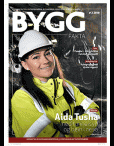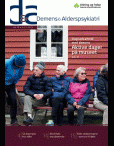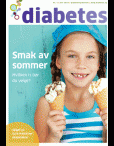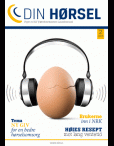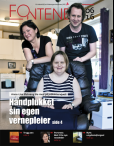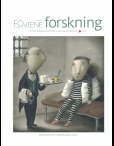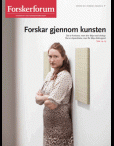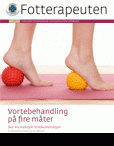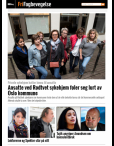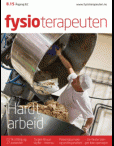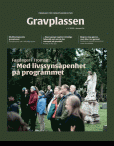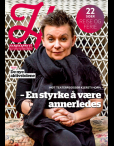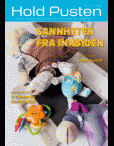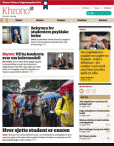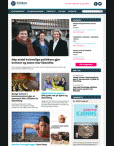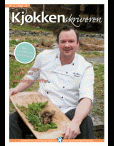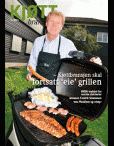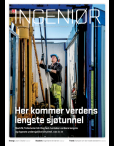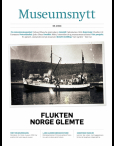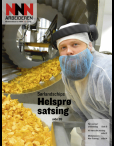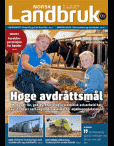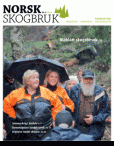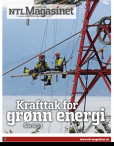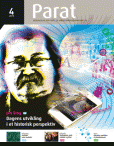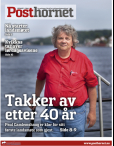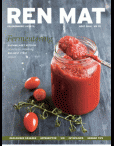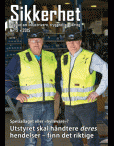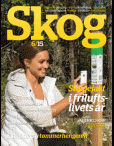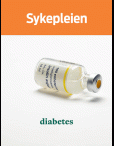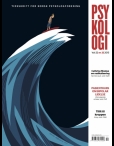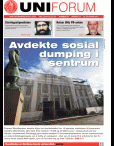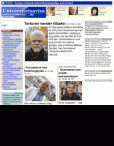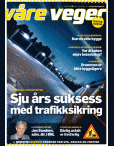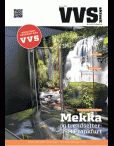Den norske tannlegeforenings Tidende
14.02.2019

This paper addresses the available recent clinical evidence for different treatment possibilities with ceramic materials.
Furthermore, an analysis of the failures occurring and the reason for these is discussed. The paper focuses on single and multi-unit restorations (fixed dental prostheses, FDPs) supported on teeth or implants.
The survival of ceramic restorations is favourable and comparable with metal ceramic ones. Biological complications are rare. The cause-effect relationship is multifactorial and mostly influenced by host-related factors rather than by the type of restorative material. Fractures are the main technical complications. Margin fractures is the most common complication for crowns, and connector fractures for FDPs.
Introduction
There is a plethora of ceramic materials available for clinicians to choose from, but limited scientific evidence to show which material is best in each specific case. There has been a steady increase in the number of clinical trials with ceramic materials, but there is still few randomized clinical trials, which are regarded as the highest level of evidence. Large differences in study population, methods used, success and survival criteria and follow-up time among the different prospective and retrospective clinical trials make comparison among the materials and treatment options difficult. This paper addresses the available recent clinical evidence for different treatment possibilities with ceramic materials. Furthermore, an analysis of the failures occurring and the reason for these are discussed.
When assessing clinical success, there are several criteria that need to be addressed. Most clinical trials report survival rates, but with no further disclosure of what is regarded as «survival» (1). Survival can thus mean everything from «no problems at all» to the restoration is «still in place» (Figure 1). According to Tan et al. (2), a survived restoration is still in use at the follow-up time, with or without reversible complications.
Success, however, is used as term for «a restoration with no complications during the observation period,» (2). Patient satisfaction is surprisingly seldom included in the evaluation. There are reasons to believe that every-day practices have lower success rates than what is generally reported in clinical trials where specialists with ample time perform the prosthetic treatment.
Survival of tooth-supported single unit crowns
Several systematic reviews have evaluated the success and survival of ceramic single unit restorations (3-5), but very few studies have more than 5 year's follow-up. When considering the success and survival of different materials and restoration types one must take into consideration that they are often made based on very different indications and conditions. Some reviews include meta-analyses where all the individual data from each of the included studies were similar enough to be put into one large pool for increased power of the statistical analyses. The meta-analysis has showed the survival rates of single unit ceramic crowns to be similar to metal ceramic ones with a 5 year survival rate of 94 % (5). Metal-ceramics is still considered as a «gold standard» with regard to clinical evidence. The posterior ceramic crowns seem more likely to fail than anterior crowns (5).
Veneers and adhesively cemented porcelain crowns
The use of shell-like adhesively cemented porcelain crowns and buccal veneers is well documented in multiple studies (6,7). The survival rates are high; around 90 % over 5-10 years and complications are few. Fractures are the most common complication (4 %), followed by debonding (2 %) and secondary caries (1 %). More complications occur when the preparation border extends beyond enamel or when cementation is performed without sufficient control of humidity. The restorations evaluated in these studies are mostly in the anterior region and on teeth with no or moderate previous damages which would significantly improve ease of maintenance and the potential for success and survival. Porcelains are used in veneered bi-layer ceramics and in metal-ceramics, as well as in aesthetic veneers and shell-like crowns, where glass-ceramics and zirconia cannot satisfy the need for optimal aesthetics.
Inlays-onlays
The survival and success of inlays and onlays have been studied in multiple trials (8). The overall 10-years survival rates are around 90 %. There are, however, large discrepancies in inclusion and exclusion criteria in the different studies, ranging from small MOD-inlays to large onlays which are closer to 3/4 crowns and so called «table-top» onlays for severely worn dentitions. Early trials of chair-side produced inlays show relatively high complication rates with marginal chipping, discoloration and secondary caries as common complications (9). The intra-oral scanning and CAD/ CAM production has improved immensely since the introduction in the 1990's, however, and the success rates are naturally improving as a consequence. Fractures are the most common complication (4 %), followed by endodontic complications (3 %) and secondary caries (1 %) and debonding (1 %) (8).
Glass-ceramic crowns
Lithium- disilicate (LiO2) reinforced glass-ceramic crowns are among the best-documented treatment choices for restoring teeth in terms of number of published clinical trials (10). Based on a meta-analysis of a large number of restorations, the estimated 5-year survival rate of glass ceramic (leucite or lithium-disilicate reinforced) restorations was 96.6 %, whereas glass infiltrated alumina crowns had an estimated 5-year survival rate of 94.6 %. The longterm success is, however, less certain as few studies have more than 5 years follow-up. Again, one must consider that the information of the previous condition of the restored teeth in the different studies is limited, and it is thus difficult to compare the survival rates for each separate case.
Zirconia and Alumina (polycrystalline ceramics)
Alumina crowns were for many years the most used ceramic restorations in the Nordic countries. Studies of alumina crowns have shown a 5-year survival rate of approximately 93 % (3-5). Based on personal reports and feedback from dental technicians, the complication rates were significantly higher than reported in scientific publications. Both crown loosening and fractures have been experienced frequently. Alumina has been more or less totally replaced by zirconia over the last 10 years as the material of choice for ceramic restorations for teeth with moderate to substantial loss of substance and need for strong material. Relatively few clinical prospective studies on single unit zirconia crowns have been performed, but some recent reports indicate a 96 % 5-year survival rate, but with a significant drop in survival in the following two years to 75 %-93 % (11-14). Two retrospective studies based on dental laboratory data from up to 5 years of production show fracture rates of 3.35 % for bi-layered crowns and 2.0 per cent for monolithic restorations (15-16).
Few studies have exceeded mean five-year follow-up time in ceramic restorations. It should be kept in mind that the improvement of ceramic materials has developed quickly in recent years and the results of the long follow-up studies may include old materials. So far, there is no clinical documentation above one year of the clinical performance of translucent or high-translucent zirconia (cubic/anterior) materials that are recently introduced.
Survival of tooth-supported fixed dental prostheses (FDPs)
Two recent systematic reviews have addressed the survival rates of tooth-supported FDPs (17-18). Both found that the difference between ceramic and metal-ceramic restorations was not statistically significant after 5 years follow-up. The estimated survival rate of reinforced glass ceramics was 89.1 %, whereas glass-infiltrated alumina had 86.2 % and zirconia approximately 91 %. The survival rate of metal-ceramic FDPs was 94.4 % after five years. Regarding zirconia, long-term (7-10 years) follow-up studies have been published for multi-unit FDPs and the survival rate ranges from 75-100 % (12, 19-21). Veneer chipping was the predominant complication in the earlier studies. common complications (9). The intra-oral scanning and CAD/ CAM production has improved immensely since the introduction in the 1990's, however, and the success rates are naturally improving as a consequence. Fractures are the most common complication (4 %), followed by endodontic complications (3 %) and secondary caries (1 %) and debonding (1 %) (8).
Glass-ceramic crowns
Lithium- disilicate (LiO2) reinforced glass-ceramic crowns are among the best-documented treatment choices for restoring teeth in terms of number of published clinical trials (10). Based on a meta-analysis of a large number of restorations, the estimated 5-year survival ra
Gå til medietThe survival of ceramic restorations is favourable and comparable with metal ceramic ones. Biological complications are rare. The cause-effect relationship is multifactorial and mostly influenced by host-related factors rather than by the type of restorative material. Fractures are the main technical complications. Margin fractures is the most common complication for crowns, and connector fractures for FDPs.
Introduction
There is a plethora of ceramic materials available for clinicians to choose from, but limited scientific evidence to show which material is best in each specific case. There has been a steady increase in the number of clinical trials with ceramic materials, but there is still few randomized clinical trials, which are regarded as the highest level of evidence. Large differences in study population, methods used, success and survival criteria and follow-up time among the different prospective and retrospective clinical trials make comparison among the materials and treatment options difficult. This paper addresses the available recent clinical evidence for different treatment possibilities with ceramic materials. Furthermore, an analysis of the failures occurring and the reason for these are discussed.
When assessing clinical success, there are several criteria that need to be addressed. Most clinical trials report survival rates, but with no further disclosure of what is regarded as «survival» (1). Survival can thus mean everything from «no problems at all» to the restoration is «still in place» (Figure 1). According to Tan et al. (2), a survived restoration is still in use at the follow-up time, with or without reversible complications.
Success, however, is used as term for «a restoration with no complications during the observation period,» (2). Patient satisfaction is surprisingly seldom included in the evaluation. There are reasons to believe that every-day practices have lower success rates than what is generally reported in clinical trials where specialists with ample time perform the prosthetic treatment.
Survival of tooth-supported single unit crowns
Several systematic reviews have evaluated the success and survival of ceramic single unit restorations (3-5), but very few studies have more than 5 year's follow-up. When considering the success and survival of different materials and restoration types one must take into consideration that they are often made based on very different indications and conditions. Some reviews include meta-analyses where all the individual data from each of the included studies were similar enough to be put into one large pool for increased power of the statistical analyses. The meta-analysis has showed the survival rates of single unit ceramic crowns to be similar to metal ceramic ones with a 5 year survival rate of 94 % (5). Metal-ceramics is still considered as a «gold standard» with regard to clinical evidence. The posterior ceramic crowns seem more likely to fail than anterior crowns (5).
Veneers and adhesively cemented porcelain crowns
The use of shell-like adhesively cemented porcelain crowns and buccal veneers is well documented in multiple studies (6,7). The survival rates are high; around 90 % over 5-10 years and complications are few. Fractures are the most common complication (4 %), followed by debonding (2 %) and secondary caries (1 %). More complications occur when the preparation border extends beyond enamel or when cementation is performed without sufficient control of humidity. The restorations evaluated in these studies are mostly in the anterior region and on teeth with no or moderate previous damages which would significantly improve ease of maintenance and the potential for success and survival. Porcelains are used in veneered bi-layer ceramics and in metal-ceramics, as well as in aesthetic veneers and shell-like crowns, where glass-ceramics and zirconia cannot satisfy the need for optimal aesthetics.
Inlays-onlays
The survival and success of inlays and onlays have been studied in multiple trials (8). The overall 10-years survival rates are around 90 %. There are, however, large discrepancies in inclusion and exclusion criteria in the different studies, ranging from small MOD-inlays to large onlays which are closer to 3/4 crowns and so called «table-top» onlays for severely worn dentitions. Early trials of chair-side produced inlays show relatively high complication rates with marginal chipping, discoloration and secondary caries as common complications (9). The intra-oral scanning and CAD/ CAM production has improved immensely since the introduction in the 1990's, however, and the success rates are naturally improving as a consequence. Fractures are the most common complication (4 %), followed by endodontic complications (3 %) and secondary caries (1 %) and debonding (1 %) (8).
Glass-ceramic crowns
Lithium- disilicate (LiO2) reinforced glass-ceramic crowns are among the best-documented treatment choices for restoring teeth in terms of number of published clinical trials (10). Based on a meta-analysis of a large number of restorations, the estimated 5-year survival rate of glass ceramic (leucite or lithium-disilicate reinforced) restorations was 96.6 %, whereas glass infiltrated alumina crowns had an estimated 5-year survival rate of 94.6 %. The longterm success is, however, less certain as few studies have more than 5 years follow-up. Again, one must consider that the information of the previous condition of the restored teeth in the different studies is limited, and it is thus difficult to compare the survival rates for each separate case.
Zirconia and Alumina (polycrystalline ceramics)
Alumina crowns were for many years the most used ceramic restorations in the Nordic countries. Studies of alumina crowns have shown a 5-year survival rate of approximately 93 % (3-5). Based on personal reports and feedback from dental technicians, the complication rates were significantly higher than reported in scientific publications. Both crown loosening and fractures have been experienced frequently. Alumina has been more or less totally replaced by zirconia over the last 10 years as the material of choice for ceramic restorations for teeth with moderate to substantial loss of substance and need for strong material. Relatively few clinical prospective studies on single unit zirconia crowns have been performed, but some recent reports indicate a 96 % 5-year survival rate, but with a significant drop in survival in the following two years to 75 %-93 % (11-14). Two retrospective studies based on dental laboratory data from up to 5 years of production show fracture rates of 3.35 % for bi-layered crowns and 2.0 per cent for monolithic restorations (15-16).
Few studies have exceeded mean five-year follow-up time in ceramic restorations. It should be kept in mind that the improvement of ceramic materials has developed quickly in recent years and the results of the long follow-up studies may include old materials. So far, there is no clinical documentation above one year of the clinical performance of translucent or high-translucent zirconia (cubic/anterior) materials that are recently introduced.
Survival of tooth-supported fixed dental prostheses (FDPs)
Two recent systematic reviews have addressed the survival rates of tooth-supported FDPs (17-18). Both found that the difference between ceramic and metal-ceramic restorations was not statistically significant after 5 years follow-up. The estimated survival rate of reinforced glass ceramics was 89.1 %, whereas glass-infiltrated alumina had 86.2 % and zirconia approximately 91 %. The survival rate of metal-ceramic FDPs was 94.4 % after five years. Regarding zirconia, long-term (7-10 years) follow-up studies have been published for multi-unit FDPs and the survival rate ranges from 75-100 % (12, 19-21). Veneer chipping was the predominant complication in the earlier studies. common complications (9). The intra-oral scanning and CAD/ CAM production has improved immensely since the introduction in the 1990's, however, and the success rates are naturally improving as a consequence. Fractures are the most common complication (4 %), followed by endodontic complications (3 %) and secondary caries (1 %) and debonding (1 %) (8).
Glass-ceramic crowns
Lithium- disilicate (LiO2) reinforced glass-ceramic crowns are among the best-documented treatment choices for restoring teeth in terms of number of published clinical trials (10). Based on a meta-analysis of a large number of restorations, the estimated 5-year survival ra




